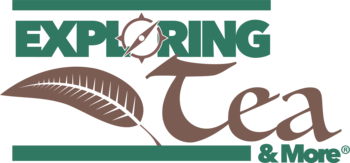History of Tea
Tea is nearly as old as time itself
Below are some of the milestones that have made the world’s second most popular beverage (after water) what it is today.
2737 BC
According to legend Chinese Emperor Shen Nung discovers tea when some leaves from a nearby bush fall into his pot of boiling water. (Water was commonly boiled at this time before drinking.) Rather than discard the water, he sipped it and found that it invigorated him.
206 BC- 220 AD
During the Han Dynasty, tea becomes a major commodity for the first time.
1191
A Japanese monk named Eisai brings tea seeds to Kyoto and plants Japan’s first tea bushes.
1500s
The Japanese tea ceremony begins to develop under the guidance of Zen monk Sen-no Rikyu
1600
British East India Company granted a charter by Queen Elizabeth I.
1602
Dutch East India Company established.
1610
The first shipment of Chinese tea, Fujian grown Tong mu Phoenix Lapsang, reaches Holland. News of the exotic new beverage begins to spread throughout European society.
1630s
Tea appreciation begins among the elite of Paris. It is believed that the practice of adding milk to tea was developed in France by a noblewoman, Madame de la Sablière.
1652-1654
Tea introduced to England by the Dutch. The new beverage comes to be touted as one of the world’s first “health products” and is recommended by the government as a replacement for Ale, then the traditional breakfast beverage.
1679
London’s tea auction begins selling its first lots of Chinese tea.
1713
East India Company's tea sales reach 97,000kg for the year.
1773
Boston Tea Party. Chests of tea are thrown into Boston Harbor to protest against a newly imposed tax on tea by Britain. (Tea continues to be enjoyed however, albeit in smaller quantities.)
1813
East India Company's tea sales grow to 14.5 million kgs per annum. These large numbers may be attributed to the fact that the company holds a monopoly on British tea imports from China.
1823
Robert Bruce, a Scot, learns of wild tea growing in Assam and reports his find to East India Headquarters in London. (Until this time the British Empire had yet to produce her own tea in large quantities)
1838
First lot of Assam tea sails for London. This lot of 12 chests fetches high prices at auction. China’s monopoly on world production begins to diminish.
1841
Tea is first planted in Darjeeling by a British surgeon working in the area.
1860s
James Taylor establishes Ceylon’s first tea factory.
Late 1800's
Cultivation and trading of Rooibos begins in South Africa.
1903
The silk teabag makes its debut. Purists everywhere sigh.
Note: the first teabags were made of real silk, not the “silken” material used in many of today’s teabags - a non-biodegradable nylon.
1904
Tea merchant Thomas Sullivan of New York first sells teabags commercially.
1904
Iced tea makes its debut at the St. Louis World Fair.
1920s
By the early 20th century, world exports of tea reach approx. 310,000 metric tons per annum. Of this, 75% is from India and Ceylon and 9% from Dutch producers in Indonesia. 60% of all exports go to Britain. (Exact figures for China during this period not known. As well, wholesale commercial production of tea in Africa would not start until later in the 20th century.)
1978
Metropolitan’s Master Taster begins his career in tea at one of North America’s oldest tea import companies.
1990
Metropolitan Tea opens its doors with its mandate to “Provide an unparalleled tea experience.”
1991
Metropolitan Tea enlists European certifying bodies, BCS, OKO, ECCOCERT, to certify all organic teas.
June, 1998
London Tea Auction closes after 300 years of trading
2000s
Global tea consumption continues to push new boundaries in terms of volume and styles produced.

